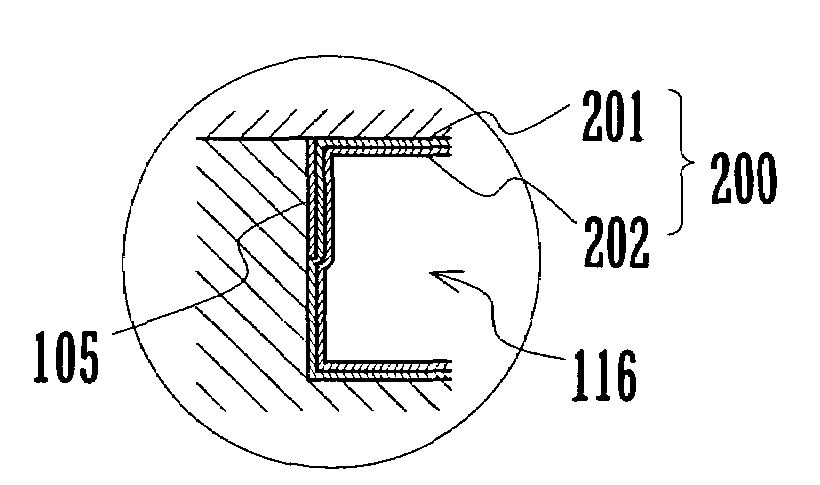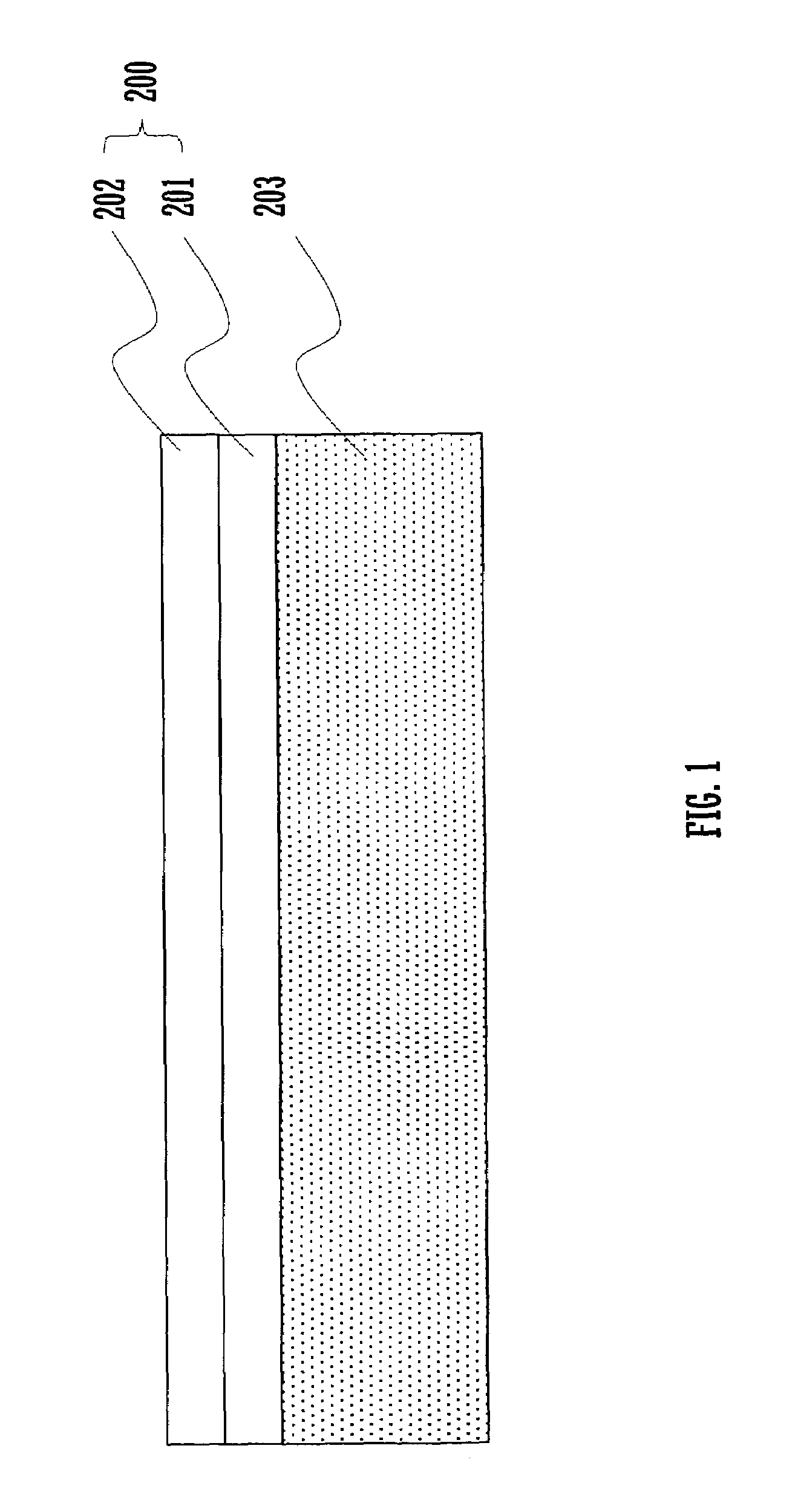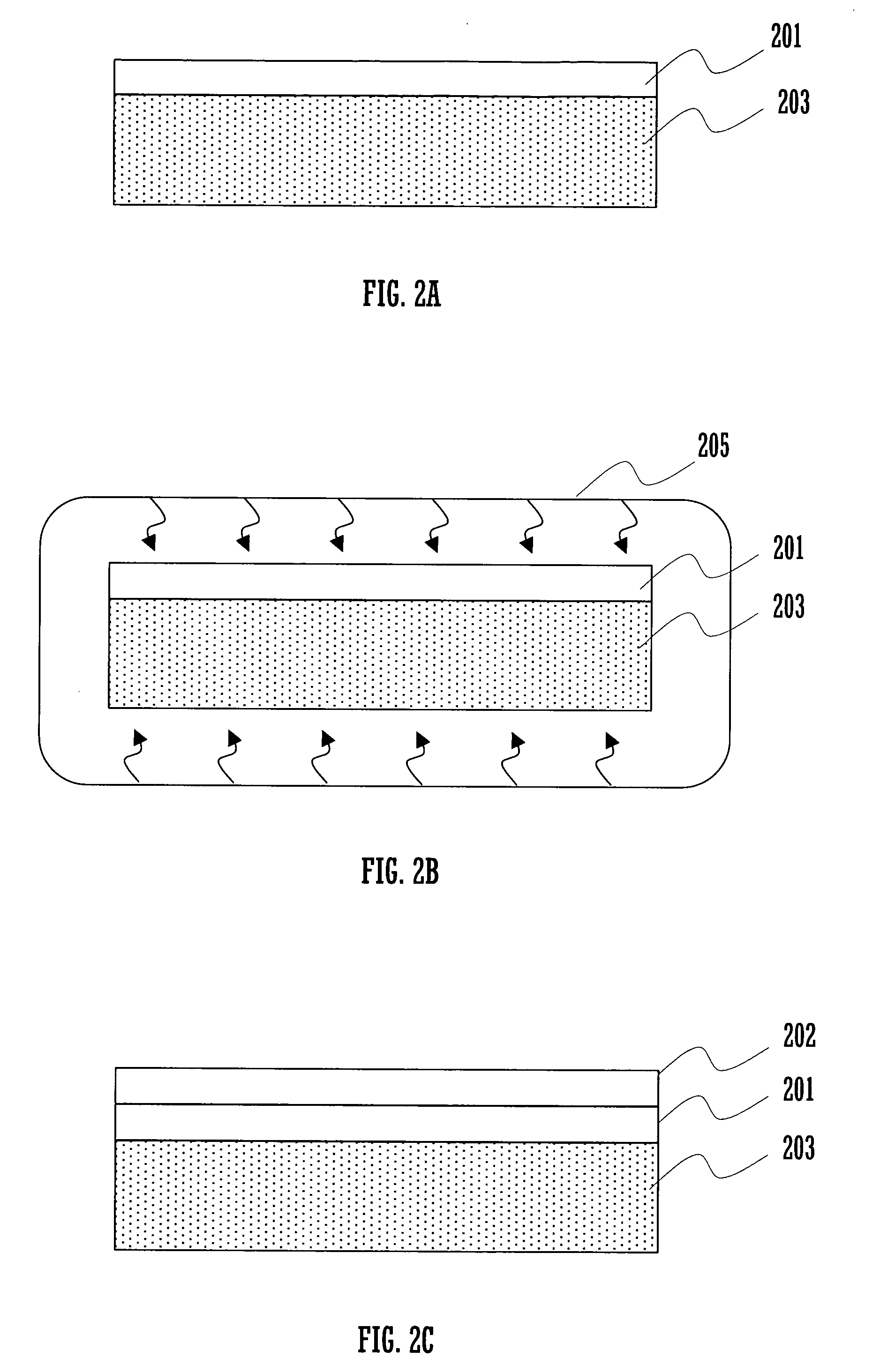Method for producing organic insulating coating and ink-jet printhead produced according to the method
a technology of organic insulating coating and inkjet printing, which is applied in the direction of coatings, pretreated surfaces, printing, etc., can solve the problems of high ink durability, difficult miniaturization of printheads, and difficult increase of nozzle density of printheads
- Summary
- Abstract
- Description
- Claims
- Application Information
AI Technical Summary
Benefits of technology
Problems solved by technology
Method used
Image
Examples
Embodiment Construction
[0044]FIG. 1 is a diagram showing a configuration example of an organic insulating coating formed on a substrate according to a method for producing an organic insulating coating of the present invention. An organic insulating coating 200 formed on a surface of a substrate 203 is composed of a first organic coating 201 and a second organic coating 202, each of which is a parylene-based organic coating (hereinafter referred to as a parylene coating) of thickness 2 μm.
[0045]FIGS. 2A to 2C are diagrams illustrating a method for producing the organic insulating coating. When the organic insulating coating 200 is formed on the substrate 203, the parylene coating 201 is first formed to have thickness 2 μm on the substrate 203, as shown in FIG. 2A.
[0046]Then, as shown in FIG. 2B, the substrate 203 with the first parylene coating formed thereon is placed in a heating device 205 such as an oven to be heated at 100° C. for two hours in the atmosphere. Although an oven is used for heating the ...
PUM
| Property | Measurement | Unit |
|---|---|---|
| time | aaaaa | aaaaa |
| temperature | aaaaa | aaaaa |
| temperature | aaaaa | aaaaa |
Abstract
Description
Claims
Application Information
 Login to View More
Login to View More - R&D
- Intellectual Property
- Life Sciences
- Materials
- Tech Scout
- Unparalleled Data Quality
- Higher Quality Content
- 60% Fewer Hallucinations
Browse by: Latest US Patents, China's latest patents, Technical Efficacy Thesaurus, Application Domain, Technology Topic, Popular Technical Reports.
© 2025 PatSnap. All rights reserved.Legal|Privacy policy|Modern Slavery Act Transparency Statement|Sitemap|About US| Contact US: help@patsnap.com



